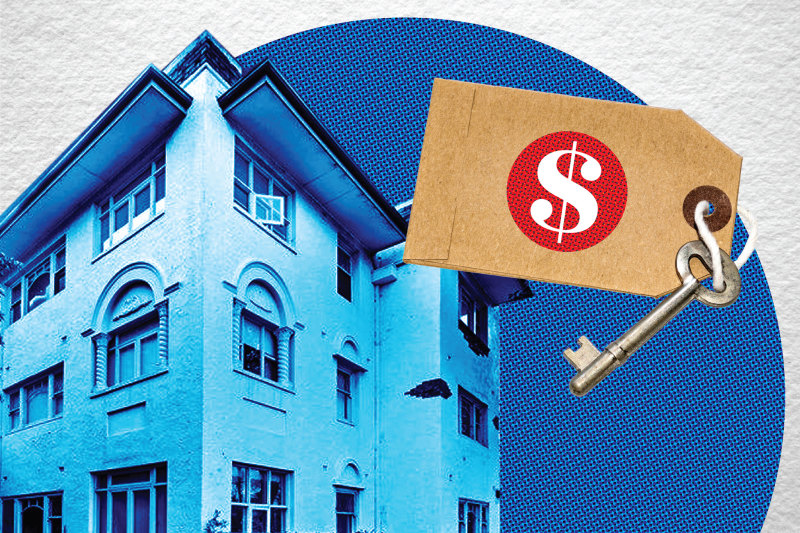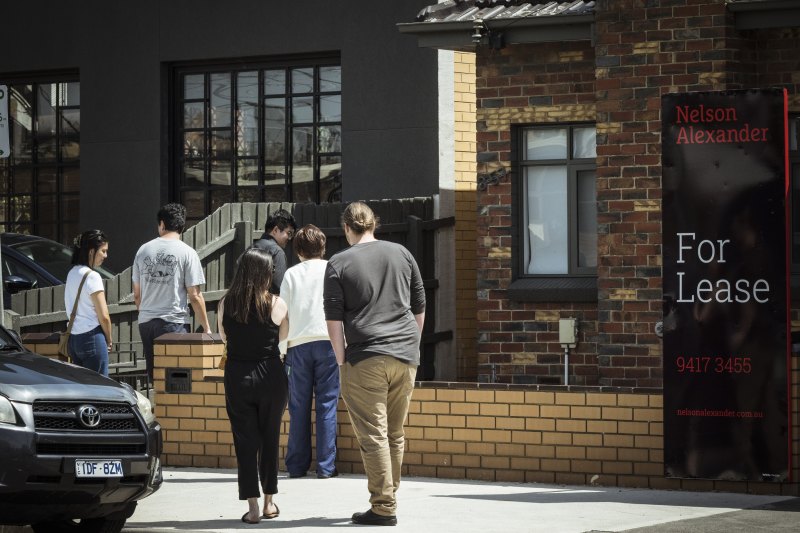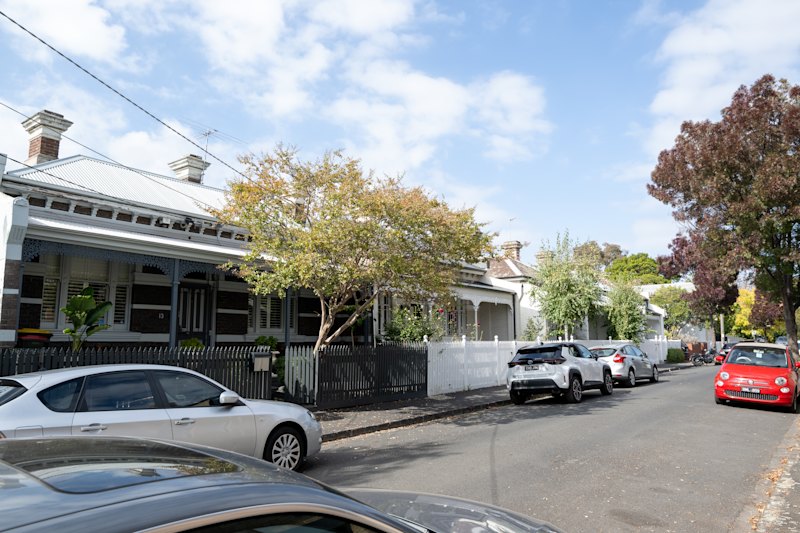How to get your bond back for a rental property
A bond can be one of the biggest costs when moving into a new rental. It’s usually a month’s or four weeks’ rent paid by the tenant and held as security in case a tenant breaks the rental agreement.
Returning the bond at the end of the tenancy isn’t always a smooth process – but there are steps renters can take to help make it so.

In NSW last year, 13.8 per cent of tenants who left a rental property lost the full bond, and about 24 per cent lost part of the bond.
In Victoria in 2021-22, the respective figures were 9 per cent and 25 per cent.
These are substantial losses as rents are at record highs in most capital cities. Asking rents for units rose 17.2 per cent in Sydney to a median $680 a week over the year to December, and 15.6 per cent in Melbourne to $520 a week, on Domain figures.
What are the common issues?
Tenants’ Union of NSW chief executive Leo Patterson Ross said the most common disputes are over cleaning costs, repair costs or financial disputes over outstanding rent or bills.
He said landlords have to show there is a problem that needs to be fixed, and they have to show the tenant is responsible for it.
“A lot of the claims that go through tribunal are not supported by evidence,” Patterson Ross said.
The condition report at the start of a tenancy agreement was a key document for renters as was meticulous record keeping for the duration of the lease.

“People should be accurate, but it’s also worth taking pictures and notes, so you have a solid evidence base of what the property looked like.”
Tenants Victoria lead community education lawyer Ben Cording said it’s common for landlords to make spurious bond claims after a tenancy, recommending tenants take all available measures to protect themselves in case the bond becomes disputed after vacating the property.
“There is a cohort of rental providers and real estate agents that see it as part of their duty to make a claim for every little thing,” he said. “There’s no disincentive to keep the flies away from the honey.”
Before moving in
Take time to read the entry condition report and fill it in with your own notes.
Entry condition reports can paint a rosier picture of the home than a tenant may be inclined to agree with. Noting any damage or wear and tear in the property is important, as it is typically cited in a disagreement about the condition of the home.
Take photos of any damage, and make sure to upload them to the cloud so they’re timestamped.
Provide a copy of the photos taken to your property manager or landlord. If they can’t be attached to the entry condition report for whatever reason (for example, if it was provided to you as a DocuSign with a limited ability to edit the document), send them in an email.

It’s best to do this before moving in furniture. Not only will it capture the home as it was when the lease was signed, but big bulky items may hide pre-existing damage or wear and tear.
During the tenancy
During the lease it is (obviously) important to avoid damaging the home, but sometimes accidents happen.
It’s important to notify the property manager or landlord of any issues that arise with the property, particularly those that come up through no fault of your own.
If you have a leaky tap or an issue with a provided appliance, it’s best to get in contact with the property manager or landlord.
On moving out
When it comes time to leave the tenancy, it’s expected that the property is vacated in the same condition that it was leased in, less fair wear and tear.
It’s common for property managers and landlords to insist on professional cleaning between tenancies, but typically a tenant only has to do this if the property was professionally cleaned before they moved in.

To prove this, the renter must be provided with a receipt. Some choose to do a clean with the real estate agency’s recommended cleaner regardless, but a DIY clean can be sufficient if it’s thorough.
How to claim your bond back in each state
New South Wales
- At the end of a tenancy, do a final clean, and the agent or landlord will inspect the property and determine your bond refund.
- If both parties are in agreement over the amount, a tenant can submit a claim using their Rental Bonds Online account and the landlord or agent will be emailed a Notice of Claim.
- If there is a disagreement over the amount, the tenant can still submit their claim using the Rental Bonds Online. The landlord has 14 days to apply for a hearing with the NSW Civil and Administrative Tribunal (NCAT) to contest the claim. If the landlord does not contest within that time frame, the refund the tenant claimed will be paid.
- Alternatively, the landlord can submit a claim and a Notice of Claim will be emailed to the tenant which they can either agree to or inform Fair Trading within 14 days that the tenant has applied to NCAT for a hearing to dispute the amount.
- In NSW, whichever party disputes the claim first, the opposing side has to go to the Tribunal, Patterson Ross said.
Victoria
- Clean the property to the standard it was in when you got the keys.
- The real estate agent will give you the opportunity to attend the final inspection, which you can choose to attend or not. They will compare the state of the property to the entry condition report, if one exists.
- Negotiate further cleaning or repairs, if needed. It may be suggested you cover the costs to prevent a deduction from your bond.
- Once negotiations are completed, the agent or landlord should submit the bond refund and it will be returned to the nominated bank account.
- In Victoria, a tenant can initiate a bond refund unilaterally via the RTBA website as soon as the keys are returned, but the landlord or property manager will have 14 days to submit an application to VCAT to claim part or all of the bond.
Queensland
- Do a final clean and hand back the keys.
- Speak with the agent to see if you can come to an agreement about if any bond should be paid.
- If not, the agent will submit the refund and the bond will be repaid.
- If an agreement can’t be reached, either between the agent and renters or even between all tenants on the lease, the undisputed funds can be released. A 14-day clock starts running, and during that time the disputed funds can be challenged or a dispute resolution process initiated.

ACT
- Do a final clean and hand back the keys.
- The landlord or agent is required to give you a signed bond release application. Do not sign it if the bond refund amount isn’t filled in. However, tenants can initiate the process by submitting the form themselves.
- If the agent or landlord claims deductions, they will give you a separate notice detailing how much is claimed. A tenant has 14 days to respond in writing to initiate a dispute, which will be referred to ACAT.
South Australia
- Both the tenant and landlord must be registered with Residential Bonds Online for an electronic bond refund. There are other ways to request a refund by completing and signing a form.
- Do a final clean. The bond should be returned to the tenant at the end of the lease if there are no claims by the landlord for cleaning, outstanding rent or other costs.
- If a landlord does claim a bond amount, the tenant who has not given consent is notified of the claim (which includes information about the claim and the final date to respond) and is given a chance to dispute it.
- If the tenant does not respond, the landlord must provide evidence of the claim. Claims can be refused if the evidence is insufficient and an application will need to be made to the South Australian Civil & Administrative Tribunal (SACAT).
- Unclaimed bond money is held by the Consumer and Business Services (CBS) and can be checked at the CBS Bond Status Register.
Western Australia
- Bond money will only be paid out at the end of a tenancy if both parties agree. Do a final clean – a tenant is responsible to ensure the property is left at the end of the tenancy in a similar condition as at the start, taking into account fair wear and tear.
- The tenant is responsible for the cost of repairing any damage to the rental property during their tenancy. These costs can be claimed from the bond if the tenant agrees.
- If the landlord and tenant cannot come to an agreement about a bond refund or if a dispute arises, Consumer Protection has services to help negotiate a mutually acceptable agreement.
- Tenants can request help via the online complaint form, but either party can apply directly to the Magistrates Court for an order for the bond disposal or Tribunal order.
Tasmania
- Do a final clean and hand back the keys.
- The landlord or agent has three days to return the bond or initiate a claim. After three days, the tenant can initiate the return process.
- If the agent or landlord initiated the claim, the tenant can approve the full or partial refund. If they disagree, a dispute begins.
- If the tenant initiated the claim, the landlord has 14 days to challenge the refund before it is automatically awarded to the tenant. If it is challenged, a dispute begins.
- All parties have 10 business days to submit evidence, after which the Residential Tenancy Commissioner will review the evidence and decide who receives what.
Northern Territory
- In the NT, bonds are not held by a centralised authority, but a trust account controlled by the landlord or agent.
- When the bond is submitted, the tenant must be provided with a receipt.
- Do a final clean. If an agent or landlord wants to make a claim on the tenant’s bond, they must advise the tenant in writing within seven days of leaving the property. Any claims must be supported by receipts or quotes showing how much any damage has cost the landlord.
- If a tenant disagrees with the amount claimed, they are asked to discuss it with the landlord or agent.
- If the dispute cannot be resolved this way, tenants are encouraged to contact Consumer Affairs for more advice.
- From there, tenants can apply to have the dispute heard by NTCAT as a last resort.
We recommend
We thought you might like
States
Capital Cities
Capital Cities - Rentals
Popular Areas
Allhomes
More










